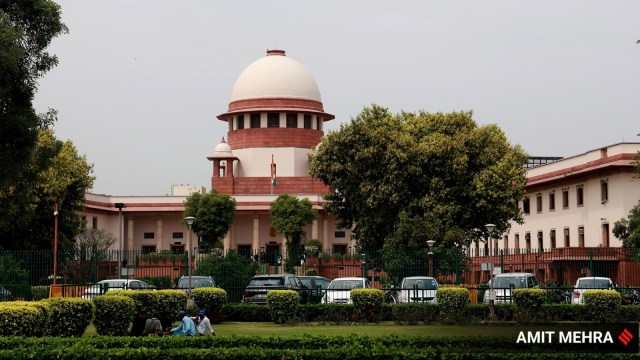Holding that considering every private resource of an individual as part of the material resource of the community will be “far-fetched” and only help scare away investors who may be wary of the level of protection they get, the Supreme Court Wednesday reserved its order on the question whether private property would fall within the definition of material resource of the community in Article 39(b) of the Constitution.
“You tell a manufacturer of semiconductor chips, situated somewhere in Taiwan to manufacture semiconductor chips in India because India needs semiconductor chips, but sorry this is a material resource of the community, we might just take it away. They will say sorry, I don’t want to invest in your country if this is the level of protection which you give me”, Chief Justice of India D Y Chandrachud presiding over the nine-judge bench said.

The remarks came as Senior Advocate Gopal Sankaranaryanan submitted that 16 judgments by various Constitution benches have consistently interpreted material resources to include private property and private resources.
Story continues below this ad
The nine-judge bench also comprised Justices Hrishikesh Roy, B V Nagarathna, Sudhanshu Dhulia, J B Pardiwala, Manoj Misra, Rajesh Bindal, Satish Chandra Sharma and Augustine George Masih. It is answering a reference to it which arose in the context of the two views given by the judges in the 1978 decision in ‘State of Karnataka And Anr Etc vs Shri Ranganatha Reddy & Anr’. The case dealt with the nationalisation of road transport services.
One of the opinions by Justice V R Krishna Iyer was that material resources of the community would include both natural and man-made, publicly and privately owned resources. The other judgment authored by Justice N L Untwalia, however, said the majority of judges did not subscribe to the view taken in respect of Article 39(b) by Justice Iyer.
Justice Iyer’s stand was further affirmed in the 1982 ‘Sanjeev Coke Manufacturing Company vs Bharat Coking Coal Ltd And Another’ case.
On Wednesday, Sankaranarayanan said the nine-judge bench needs to answer only the limited question referred to it and leave the rest to be dealt with by the different benches whenever the situation arises. However, the CJI said “if we take that all private property is comprised in material resources, there is nothing left for future benches”.
Story continues below this ad

Sankaranarayanan cited the example of a businessman setting up a vaccine manufacturing facility and said that it may have been a purely private resource at that time but after the Covid pandemic, it becomes something essential for the entire community and then the state has to step in.
The CJI said: “We are not saying that private properties are outside the scope of 39(b). What we are saying is that there must be some parameters laid down. Otherwise, the logic of ‘Ranganath Reddy and Sajeev Coke’ is that an individual is a part of the community and therefore everything owned by the individual is part of the community”.
Sankarayanayanan said attempts to lay down strict definitions for what may or may not fall under 39(b) at this stage “could come back and boomerang on us, on a future date”.
Justice Nagarathna said that “it is not just material resources per se, it is material resources of the community, and it is for the purpose of distribution. Now, if you read this in the context of ‘clause c’ of Article 39, where it speaks about the operation of economic system, distribution is an aspect of the economic system…So it should be read in that context so that the material resources of the community is so distributed that ultimately, the operation of the economic system does not result in the concentration of wealth and means of production to the common detriment”.
Story continues below this ad
She added, “both this have to be read. So, the question is if a person invests, puts up a huge factory, starts production tomorrow, it cannot be said that it is going to be taken away for the purpose of distribution to the workers. That is not the aim of that”.
Article 39(b) in the Directive Principles of State Policy (DPSP) says that “the state shall, in particular, direct its policy towards securing- that the ownership and control of the material resources of the community are so distributed as best to subserve the common good”. Article 39(c) states that “the operation of the economic system does not result in the concentration of wealth and means of production to the common detriment”.










